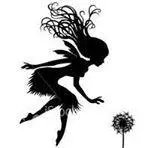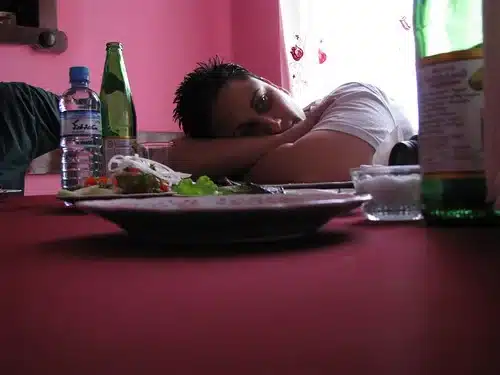Please scroll down for an English review.
מחנה ראוונסבריק נועד במקור לאסירות פוליטיות מגרמניה. אבל עם השנים נוספו לו אוכלוסיות נשים נוספות. בתחילה אסירות מאוסטריה ואז מפולין ובמשך הזמן גם אסירות יהודיות (שהיו מיעוט).
הנשים במחנה סווגו לחמש קבוצות שסומנו על ידי טלאי משולש בצבע שייחד כל קבוצה:
אסירות פוליטיות סומנו במשולש אדום. קבוצה זו ביצעה פעילות פוליטית שהוגדרה כאסורה.
אסירות על רקע דתי, סומנו במשולש סגול. קבוצה זו סירבה להכיר ב"דת הנאצית" ולהזדהות עימה (בעיקר עדות יהווה).
אסירות א- סוציאליות, סומנו במשולש שחור. קבוצה זו היתה בעלת התנהגות מגוונת שלא תאמה את קוד ההתנהגות החברתית הנאצית כגון יצאניות ולסביות.
אסירות יהודיות, סומנו במשולש צהוב. קבוצה שנאסרה על רקע מאפיינים של עירוב גזעי. ואסירות פליליות שסומנו במשולש ירוק.
למרות שהוא נחשב למחנה קטן יחסית, תנאי החיים במחנה ראוונסבריק היו קשים במיוחד. עבודות הפרך, ההתעללות הפיזית והניסויים שבוצעו בבני אדם בתחומי המחנה, גבו קורבנות רבים.
זהו סיפור המבוסס על סיפור אמיתי של שלוש נשים שגורלן הצטלב במחנה הנוראי הזה.
הראשונה קאשה קוזמריק, פולניה שנאסרה על רקע פוליטי. היא מגיעה עם אחותה ואימא שלה לאחר שאביה נעלם בעת הפלישה של הנאצים לפולין ולאחר שהיא נתפסת בפעילות חתרנית של סיוע למחתרת הפולנית.
השניה, הרטה אוברהויזר, רופאה גרמניה, היחידה שהגיעה למחנה במטרה לבצע שירות משמעותי שתואם את ההכשרה שקיבלה כרופאה.
השלישית, קרוליין פריידי, שגדלה בבית עשיר ואיבדה את אביה בצעירותה, פילנתרופית שבתחילה עובדת בקונסוליה הצרפתית ומסייע בתרומות לבתי יתומים בצרפת. כאשר המלחמה הסתיימה היא מסייע ל"ארנבות" נשים פולניות שהנאצים ביצעו בהן ניסויים בבני אדם והותירו אותן נכות פיזית ומצולקות נפשית.
הסיפור נע בין נקודות המבט של קרוליין, הרטה וקאשה ומשתרע בין השנים 1939 – 1959.
זהו סיפור של שרידות, אומץ ואנושיות למול הרוע והאכזריות.
החלקים הקשים ביותר בספר עוסקים בניסויים בבני אדם שעברו האסירות בראוונסבריק. הסבל של ה"ארנבות" הוא בלתי יתואר. רק מח מעוות יתעלל כך בבני אדם. מקוממת יותר הענישה המקלה שקיבלה הרטה אוברהויזר, שלאחר חמש שנים השתחררה מהכלא וחזרה לעסוק במקצוע הרפואה ורק מלחמה בלתי מתפשרת של קרוליין וחבריה, מובילה לביטול רשיונה כרופאה.
הורדתי כוכב אחד לספר, בגלל החלק שעוסק בתקופה שלאחר מלחמת העולם השניה, לטעמי הוא לא היה מהודק מספיק. בנוסף, כאילו שהחיים לא מספיק מאתגרים ושהדמות שלה לא מספיקה בפני עצמה, המחברת הצמידה לקרוליין פרדיי הרומן הרומנטי עם שחקן תיאטרון צרפתי בדיוני. קצת סר טעם ומיותר.
ראוי לציון המחקר שערכה הסופרת, העומק והיסודיות ניכרים בכל דף. גם אפליקציית EVRIT הצמידה קריינית שעשתה את עבודתה היטב.
קריאה חזקה ומטלטלת.
בנות הלילך/ מרתה הול קלי
הוצאת כנרת זמורה דביר, 2020, 495 עמודים
דירוג SIVI –
איכות אודיו –

The Ravensbrück camp was initially built to house political prisoners from Germany. However, as time passed, it also began to accommodate female prisoners from other countries. Firstly, female prisoners from Austria were brought in, followed by those from Poland. Eventually, Jewish female prisoners were also brought to the camp, although they were a minority among the prisoners.
The women in the camp were sorted into five groups based on a colored triangular patch to distinguish each group.
Political prisoners engaged in forbidden political activity were marked with a red triangle.
A purple triangle identified women who were in prison for their religious beliefs. They did not accept the beliefs promoted by the Nazis, often because they were Jehovah's Witnesses.
Female prisoners deemed asocial were marked with a black triangle. This group exhibited diverse behaviors that did not conform to the Nazi code of social behavior, such as extroversion and lesbianism.
Jewish women prisoners were marked with a yellow triangle. A group was banned due to characteristics of racial mixing, and female criminal prisoners were marked with a green triangle.
Although it is considered a relatively small camp, the living conditions in the Ravensbrück camp were harsh. The hard work, the physical abuse, and the experiments carried out on humans in the camp claimed many victims.
This is a based-on-true-events story where three women's lives intersected in a horrific camp.
Kašha Kuzmaryk is a Polish national banned from her country on political grounds. Her sister and mother accompany her as her father disappears during the Nazi invasion of Poland. Kašha was caught aiding the Polish underground in a subversive activity, which led to her being banned from the country.
The German doctor Herta Oberheuser came to the camp to use her medical training to perform a significant service to the Nazis.
The third, Caroline Ferriday, who grew up in a wealthy home and lost her father in her youth, is a philanthropist who initially works at the French consulate and helps with donations to orphanages in France. When the war ended, she helped the Polish female "rabbits" who were subjected to human experiments by the Nazis and left physically disabled and mentally scarred.
The story spans 1939-1959, told from the perspectives of Caroline, Herta, and Kasha.
This tale is of resilience, bravery, and compassion in the face of wickedness and brutality.
The most difficult parts of the book deal with the experiments on humans that the female prisoners underwent at Ravensbrück. The suffering of the "rabbits" is indescribable. Only a twisted brain would abuse humans like that. More outrageous is the lenient sentence received by Herta Oberheuser, who, after five years, was released from prison and returned to the medical profession. Only an uncompromising war between Caroline, with the help of her friends all over Europe and the German authorities, leads to the cancellation of her license as a doctor.
I deducted one star from the book due to the part that discusses the post-World War II period. In my opinion, it lacked coherence. Moreover, the author added an unnecessary and tasteless romantic subplot involving a fictional French theater actor to Caroline Farday's already complex character, which seemed excessive.
The author's research is noteworthy and thorough, evident on every page. The E-VRIT app also includes a skilled narrator.
A powerful and moving read.
לגלות עוד מהאתר Sivi's Books
Subscribe to get the latest posts sent to your email.

